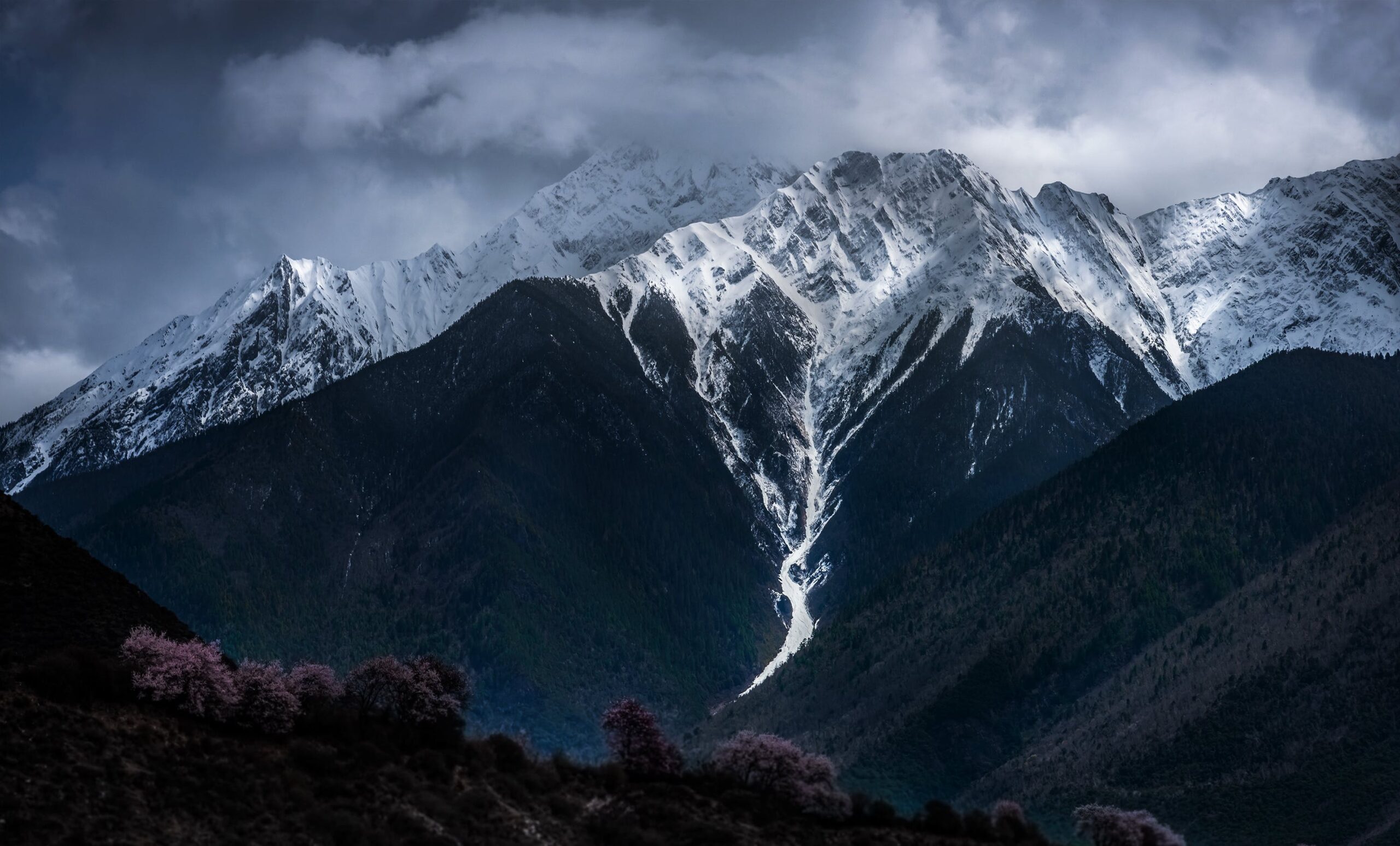As the winter season approaches, it is important to ensure that your water well is properly prepared for the cold weather ahead. Taking the necessary steps to winterize your water well can prevent costly and inconvenient issues such as freezing pipes or reduced water flow. By taking simple measures such as insulating exposed pipes and keeping your wellhead protected, you can ensure a reliable water supply throughout the winter months. In this article, we will explore the essential steps you need to take to winterize your water well, providing you with peace of mind and a well-functioning system.
Assessing the Well’s Condition
Checking for leaks
Before winterizing your water well, it is important to assess its condition to ensure its optimal functionality during the colder months. One crucial step in this process is checking for any leaks in the system. Inspect the wellhead, pipes, and other components for any signs of water leakage, such as wet spots or puddles. If you notice any leaks, it is essential to address them promptly to prevent further damage and ensure the efficiency of your well system.
Inspecting the pump and pressure tank
Another aspect of assessing your water well’s condition is inspecting the pump and pressure tank. These components play a vital role in the proper functioning of the system, especially during winter when freezing temperatures can put additional strain on them. Make sure to examine the pump for any signs of wear or damage, such as rust or cracks. Additionally, check the pressure tank for any issues such as excessive pressure or waterlogged conditions. Any anomalies should be addressed promptly to avoid potential problems during the winter months.
Evaluating the well casing
As part of your well assessment, it is essential to evaluate the condition of the well casing. The well casing protects the well from external influences and keeps contaminants out of the water supply. Inspect the casing for any cracks, corrosion, or damage that may compromise its integrity. Additionally, ensure that the casing is securely sealed to prevent the entry of contaminants. If you notice any issues with the well casing, it is advisable to consult a well service professional for a thorough evaluation and necessary repairs.
Protecting the Water Well System
Insulating exposed pipes
One effective way to protect your water well system during winter is to insulate exposed pipes. Exposed pipes are more susceptible to freezing, which can lead to burst pipes and costly damages. Insulating the pipes with foam or pipe sleeves will help retain heat and prevent freezing. Pay particular attention to pipes that are located in unheated areas such as basements, crawl spaces, or attics. By insulating the exposed pipes, you can significantly reduce the risk of pipe freeze-ups and ensure a reliable water supply throughout winter.
Wrapping the pressure tank
The pressure tank is another crucial component of your water well system that requires protection during winter. Wrapping the pressure tank with insulation material can help maintain a consistent temperature and prevent it from freezing. There are specialized pressure tank covers available that provide additional insulation and protection against the elements. By taking this simple step, you can extend the lifespan of your pressure tank and avoid potential malfunctions during the colder months.
Using heat tape or trace heating cables
For added protection against freezing temperatures, consider utilizing heat tape or trace heating cables. These heating solutions are specifically designed to keep pipes and other components warm and prevent freezing. Heat tape can be wrapped around vulnerable sections of the water well system, such as the wellhead or exposed pipes. Trace heating cables can also be installed along the length of the pipes to provide consistent heat. Remember to follow the manufacturer’s instructions and safety guidelines when using heat tape or trace heating cables to ensure their effectiveness.

Preparing the Well Pump
Disconnecting and draining the pump
Before winterizing your water well, it is important to disconnect and drain the well pump. This step is crucial to prevent the pump from freezing and sustaining damage during the colder months. Begin by turning off the power supply to the pump. Then, follow the manufacturer’s instructions to drain the pump and remove any remaining water. By properly disconnecting and draining the pump, you can protect it from freezing and ensure its longevity.
Removing the check valve
In addition to disconnecting and draining the pump, it is advisable to remove the check valve before winterizing your water well. The check valve prevents the backflow of water, ensuring a consistent flow from the well to your home. However, during winter, the check valve can freeze and cause blockages, resulting in a loss of water supply. By removing the check valve and storing it in a warm and dry place, you can prevent these issues and maintain a reliable water flow throughout the colder months.
Treating and Disinfecting the Water
Testing water quality
As part of winterizing your water well, it is crucial to test the water quality to ensure it is safe for consumption. Test kits for water quality analysis are readily available and can help identify potential contaminants or abnormalities. Consider testing for bacteria, nitrates, and other common contaminants that may be present in your area. If any issues are detected, it is important to address them promptly to prevent health risks and ensure the purity of your water supply.
Treating for bacteria or contaminants
If your water quality test reveals the presence of bacteria or other contaminants, it is essential to treat the water before winterizing your well. There are various treatment options available, such as chlorination or UV disinfection systems, that can effectively eliminate harmful microorganisms. Consult a well service professional to determine the best treatment method based on your specific water quality test results. By effectively treating the water, you can ensure the health and safety of your household during the winter months.
Shock chlorinating the well
Shock chlorination is an additional step that can be taken to disinfect your water well before winter. This process involves introducing a high concentration of chlorine into the well system to eliminate bacteria, viruses, and other harmful microorganisms. Shock chlorination should be performed by a well service professional who can determine the appropriate dosage and ensure it is done safely. By shock chlorinating the well, you can provide an extra layer of protection against potential contaminants and maintain a clean and healthy water supply.

Securing the Well Opening
Sealing the well cap or cover
A critical aspect of winterizing your water well is securing the well opening. The well cap or cover helps prevent the entry of debris, insects, and other contaminants into the well. Ensure that the well cap or cover is securely sealed to maintain the integrity of the system and protect the water supply. If you notice any cracks or damage on the well cap or cover, it is important to replace them promptly to prevent unauthorized access and potential contamination.
Insulating the well cap
In addition to sealing the well cap or cover, consider adding insulation to further protect the well opening. Insulating the well cap can help minimize the effects of freezing temperatures on the well system. There are various insulation materials available, such as foam or specialized well cap covers, that can provide the necessary protection. By insulating the well cap, you can reduce the risk of freezing and ensure the proper functioning of your water well throughout winter.
Adding a well house or shelter
For added protection and security, consider constructing a well house or shelter to enclose the well opening. A well house provides an additional layer of insulation and shields the well system from extreme weather conditions. It also helps safeguard the well equipment from potential damage caused by debris, falling objects, or accidental contact. When building a well house, ensure proper ventilation and access for maintenance purposes. Consult a professional contractor to ensure the structure is built according to local codes and regulations.
Preventing Freezing in Above-Ground Components
Insulating exposed pipes
Similar to protecting the water well system, insulating exposed pipes is crucial to prevent freezing in above-ground components. Exposed pipes, such as those connected to outdoor faucets or hose bibs, are particularly vulnerable to freezing temperatures. Insulating these pipes with foam or pipe sleeves will help retain heat and prevent potential freeze-ups. Additionally, consider installing frost-free faucets or shutting off the water supply to outdoor fixtures, draining them, and disconnecting hoses to avoid water accumulation and subsequent freezing.
Using heat tape or trace heating cables
To provide extra protection against freezing, utilizing heat tape or trace heating cables is recommended for above-ground components as well. Wrap heat tape around exposed pipes or install trace heating cables along their length to maintain a consistent temperature and prevent freezing. These heating solutions are especially useful for areas with poor insulation or where exposure to cold air is unavoidable. Nevertheless, always follow the manufacturer’s instructions and safety guidelines to ensure proper installation and usage.
Draining and disconnecting hoses
In addition to insulating exposed pipes, it is crucial to drain and disconnect hoses connected to outdoor faucets or spigots. Leaving water in hoses can lead to freezing and potential damage to both the hoses and the connected fixtures. Before winterizing, drain the hoses completely and store them in a warm and dry location. By disconnecting and storing hoses properly, you can prevent freezing and prolong their lifespan.

Maintaining the Winterized Well
Monitoring the system regularly
Once you have winterized your water well, it is important to monitor the system regularly throughout the colder months. Regular checks can help identify any potential issues promptly and prevent more significant problems from arising. Keep an eye out for leaks, abnormal noises, or fluctuations in water pressure. Any changes or discrepancies should be addressed promptly by a well service professional to ensure the continued functionality of your winterized well.
Keeping the well house or shelter clean
If you have constructed a well house or shelter as part of your winterizing efforts, it is essential to keep it clean and well-maintained. Regularly remove debris, leaves, or vegetation that may accumulate around the well house to ensure proper ventilation and prevent potential blockages. Additionally, inspect the well house for any signs of damage or deterioration and address them promptly. A clean and well-maintained well house or shelter will help protect your water well system and prolong its lifespan.
Checking for any damage or issues
Even with proper winterization, it is important to periodically check for any damage or issues that may arise. Inspect the entire water well system, including pipes, pressure tank, well casing, and electrical components, to ensure they remain in good condition. Look for signs of leaks, corrosion, or wear and tear. If you notice any damage or issues, consult a well service professional for necessary repairs or maintenance. By addressing any problems early on, you can prevent further damage and ensure the longevity of your water well system.
Preparing for Power Outages
Having a backup power source
Power outages can occur during winter storms, leaving you without access to electricity to run your water well system. To prepare for such situations, consider having a backup power source, such as a generator or battery backup system. These devices can provide temporary power to operate the well pump and ensure a continued water supply during power outages. Properly maintain and test the backup power source periodically to ensure its functionality when needed.
Insulating the well house or shelter
In addition to having a backup power source, insulating the well house or shelter is crucial to protect the water well system during power outages. Proper insulation will help retain heat and prevent freezing, even when electricity is unavailable. Insulate the walls, roof, and any other exposed surfaces of the well house or shelter using appropriate insulation materials. This extra layer of insulation will provide additional protection and help maintain a stable environment for the well system.
Using a generator or battery backup
Utilizing a generator or battery backup system can be a lifesaver during power outages, especially in rural areas reliant on water well systems. A generator can be connected to the well pump and provide power to keep the water flowing when the grid is down. Similarly, a battery backup system can temporarily power the well pump until electricity is restored or alternative arrangements can be made. Consult a well service professional to determine the most suitable generator or battery backup system for your specific well system requirements.
Understanding Winter Water Usage
Conserving water during cold periods
During winter, it is important to be mindful of your water usage and practice water conservation. Cold temperatures often lead to increased water demand for activities such as bathing, cleaning, and warm beverage preparation. To conserve water, consider taking shorter showers, fixing any leaks promptly, and using efficient appliances. By practicing mindful water usage, you can reduce unnecessary strain on your water well system and ensure a sufficient and reliable water supply throughout winter.
Managing water consumption
In addition to conserving water, managing your water consumption can help prevent overuse and potential strain on the well system. Be conscious of how much water you are using for various activities and try to space them out throughout the day. Avoid running multiple water-intensive tasks simultaneously, as this can put excessive demand on the well pump and pressure tank. By managing your water consumption, you can alleviate unnecessary stress on the well system and optimize its performance during the winter months.
Protecting the well from overuse
It is crucial to protect your water well from overuse, especially during winter when freezing temperatures can hinder the system’s performance. Overusing the well can lead to a drop in water levels or cause the well pump to work harder, potentially resulting in damage or malfunction. Be mindful of your water usage and avoid excessive demand on the system. If you notice a decrease in water pressure or signs of overuse, consult a well service professional for further guidance and assistance.
Importance of Professional Assistance
Consulting a well service professional
Winterizing your water well is an important task that requires expertise and knowledge of well systems. To ensure the best results, it is highly recommended to consult a well service professional. These professionals have the necessary experience and understanding of well systems to assess their condition accurately and provide appropriate recommendations. They can perform thorough inspections, address any issues, and guide you through the winterizing process, ensuring the longevity and reliability of your water well system.
Scheduling maintenance before winter
Before the onset of winter, it is advisable to schedule maintenance with a well service professional. Regular maintenance can help identify any potential problems and address them before they escalate. A professional can inspect the entire well system, tune up the pump, clean the pressure tank, and perform any necessary repairs or replacements. By scheduling maintenance before winter, you can have peace of mind knowing that your water well is in optimal condition to withstand the challenges of the colder months.
Getting expert advice
In addition to consulting a well service professional, seeking expert advice is crucial in understanding the unique requirements of your water well system. Every well system is different, and professional advice can help you make informed decisions tailored to your specific needs. Well service professionals can guide you on the appropriate winterization techniques, recommend suitable insulation materials, or suggest measures to protect your well system from freezing or contamination. By relying on expert advice, you can ensure the long-term functionality and reliability of your water well during winter and beyond.
In conclusion, winterizing your water well is essential to protect its components, ensure a reliable water supply, and prevent potential damage or malfunctions during the colder months. By assessing the well’s condition, protecting the water well system, preparing the well pump, treating and disinfecting the water, securing the well opening, preventing freezing in above-ground components, maintaining the winterized well, preparing for power outages, understanding winter water usage, and seeking professional assistance, you can effectively winterize your water well and enjoy a safe and uninterrupted water supply throughout the winter season. Remember to consult a well service professional for expert guidance and assistance tailored to your specific well system requirements.

